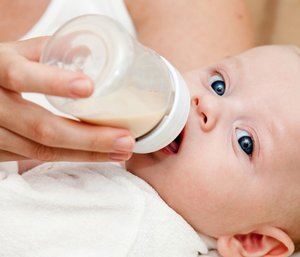Журнал «Здоровье ребенка» (62) 2015. Тематический выпуск "Детская гастроэнтерология"
Вернуться к номеру
Current approaches to diagnosis and diet therapy of cow''s milk allergy in young children.
Авторы: Nyankovska O.S. — Lviv National Medical University. Daniel Galician
Рубрики: Педиатрия/Неонатология
Разделы: Клинические исследования
Версия для печати
Allergic diseases are widespread among children. Food allergy has been defined as adverse reactions to food in which immunologic mechanisms have been demonstrated, this term therefore encompasses both immunoglobulin E (IgE)-mediated and non-IgE-mediated food allergies. Food allergy can result in considerable morbidity and in some instances results in life-threatening anaphylaxis.
The clinical presentation of food allergy involves a large spectrum of symptoms ranging from skin (urticaria, angioedema, atopic eczema/dermatitis), gastrointestinal (i.e., vomiting, colic, abdominal pain, diarrhea, constipation), respiratory (rhinorrhea, sneezing, cough, dyspnea). The clinical evaluation should include a thorough examination of nutritional status and growth, especially in children, as well as associated atopic diseases such as atopic eczema/dermatitis, allergic rhinitis, and asthma.
In this regard, the prevention, diagnosis and treatment are extremely important.
The oral food challenge is considered the standard reference test for diagnosing cow's milk allergy. After documentation of significant improvement on the diagnostic elimination, the diagnosis of cow's milk protein allergy should be confirmed by a standardized oral challenge test performed under medical supervision.
If symptoms are relevant and cow's milk protein allergy is likely, a diagnostic elimination of cow's milk protein (in the infant’s/child’s diet or in the mother’s diet in case of breast-feeding) should be initiated for a limited period of time, even in cases with negative specific IgE result. The duration of a diagnostic elimination diet depends on manifestation and should be kept as short as possible, but long enough to judge whether clinical symptoms resolve or not or become stable. For children with immediate and delayed clinical reactions (angioedema, vomiting, eczema) to 1 to 2 weeks in children In patients with gastrointestinal reactions - chronic diarrhea, it may take 2 to 4 weeks on a cow's milk protein-free diet to judge the response.
Based on this evidence, families can be provided with evidence-based advice about preventing food allergy, particularly for infants at high risk for development of allergic disease.
For all infants, exclusive breastfeeding is recommended for at least first 4–6 months of life. For the prevention of food allergy in children with family history of allergies, if breastfeeding is insufficient or not possible, infants at high-risk can be recommended a hypoallergenic formula with oligosaccharides, which have a proven positive effect in the first 4 months of life.
If the diagnosis of cow's milk protein allergy is confirmed, then the infant should be maintained on an elimination diet using a therapeutic formula for at least 6 months or until 9 to 12 months of age. Infants/children with severe immediate IgE-mediated reactions may remain on the elimination diet for 12 or even 18 months before they are rechallenged after repeated testing for specific IgE.
The majority of infants and children with cow's milk protein allergy tolerate an extensively hydrolyzed formula with whey or casein as a nitrogen source. Although the American Academy of Pediatrics defines an extensively hydrolyzed formula as a formula containing only peptides that have a molecular weight of <3000 Da. In addition to appropriate preclinical testing, therapeutic formulae must demonstrate in clinical studies that they do not provoke allergic reactions in 90% of infants or children with confirmed cow’s-milk protein allergy; however, this has been shown for only some extensively hydrolyzed formula.
In the case of their inefficiency and severe cow's milk allergy recommended amino acid formula.
Goat’s- and sheep’s-milk protein should be strictly avoided because of the high cross-reactivity with cow's milk protein.
The European Society of Pediatric Gastroenterology, Hepatology, and Nutrition and the
American Academy of Pediatrics recommend that cow’s-milk–based formulae should be preferred over soy formula in healthy infants, and soy protein–based formulae should not usually be used during the first 6 months of life.

